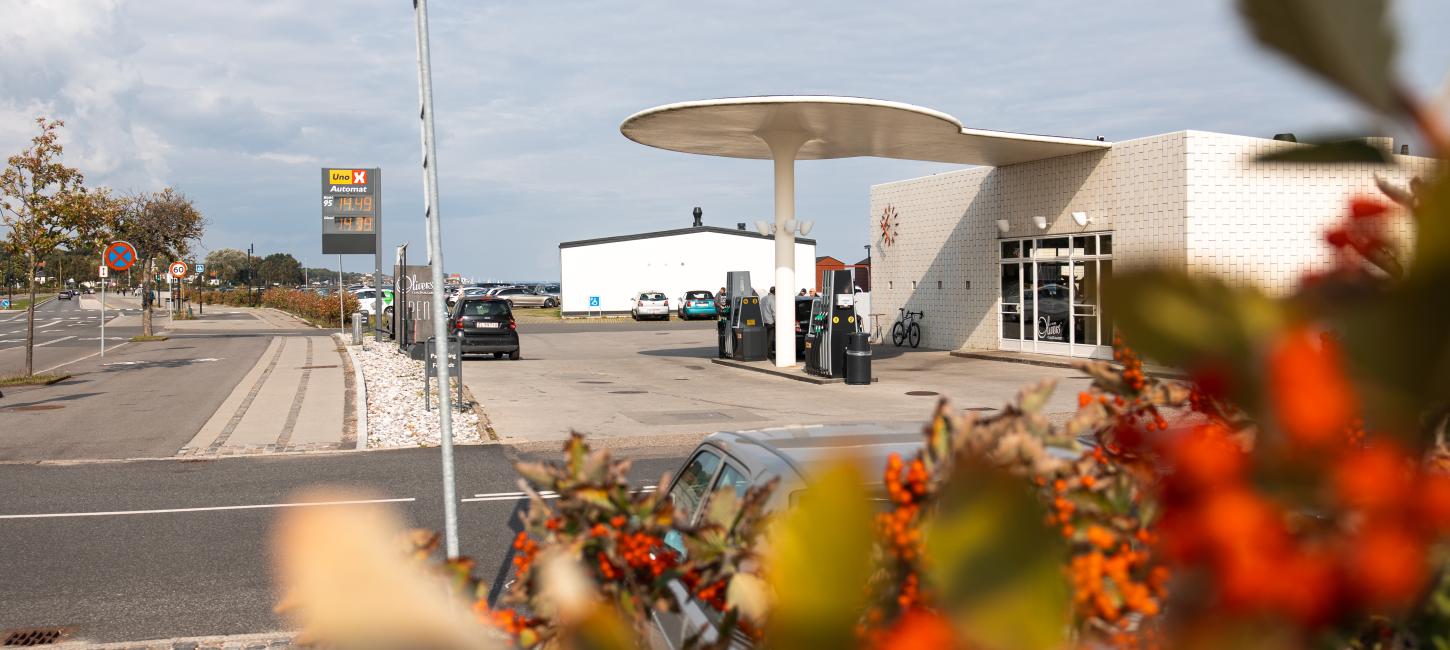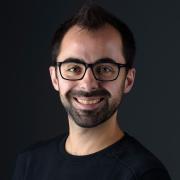Copenhagen is UNESCO-UIA World Capital of Architecture in 2023
Discover the city’s unique approach to citizen-centric urban design during UNESCO-UIA World Capital of Architecture Copenhagen 2023.

In Copenhagen and just north of the city you can explore some world-class architectural wonders designed by famous Danish architects such as Arne Jacobsen, Vilhelm Lauritzen, and Finn Juhl.
Here is a guide to some of the best examples of Danish functionalism in and around Copenhagen.
No one else personifies Danish, modern architecture and design like Arne Jacobsen. The hotel was inaugurated in 1960 and was then the first skyscraper in Copenhagen. The building is a gesamtkunstwerk; right from the facade to the cutlery in the restaurant on the 20th floor was designed by the world-famous Danish architect, who also designed the Egg and Swan chairs for the hotel. The hotel's room 606 has been completely preserved in its original style and has since been carefully restored. Visitors can contact the hotel and request a tour of Arne Jacobsen’s room; however, it is not possible to stay there.
The five-star hotel is centrally located right by Vesterport Station and Tivoli Gardens and was originally named SAS Royal Hotel. At the top is the iconic, listed SAS logo, which reminds us that back in the 60s, it was possible to check in for your flight directly at the hotel, and you were transported from the hotel directly to your plane in white SAS buses.
In 1936, Vilhelm Lauritzen won the competition to design a terminal at Copenhagen Airport. Commercial airline travel was still in its infancy, and there was no model for how an airport should look. Until then, the airfield had comprised meadows and an unassuming little building called the Wooden Castle. So, when the terminal opened in 1939, it was quite an innovation – not just for the airport in Copenhagen, but for aviation architecture in general. Vilhelm Lauritzen focused on the function of the building, dividing the terminal into two sides: entrances and street traffic along the building on the “landside” and air traffic and gates on the “airside”. This division has since become the norm – and to this day it still forms the foundation of most airport designs.
The now protected building is used today, among other things, to receive special guests at the airport, such as heads of state. It is possible to visit the building with special permission.
Before Arne Jacobsen became a world-renowned architect, one of Denmark's most important designers carried out projects on a much smaller scale. In Enghaveparken, Arne Jacobsen designed a stage building, two stalls, two pavilions, and the entrances to the park. Arne Jacobsen's projects in Enghaveparken, his first ever, are in themselves very unique. What is almost as unique is the fact that the music pavilion is his only neoclassical work ever.
The stalls were demolished in the 1970s but are now re-emerging in a modernized version, as are the entrances, the pavilions, and the stage. This means that Arne Jacobsen's oldest projects become his newest as the park was recently renovated
Today, the park is part of one of Copenhagen's progressive efforts for climate adaptation. It is an important asset in the work to stop and keep water from cloudbursts away from the city's streets.
The furniture architect Finn Juhl designed and furnished his house at Kratvænget 15 in Ordrup at the age of just 30. The house, which was completed in 1942, is today considered one of the most successful functionalist single-family houses in Denmark. There are very few houses from the hand of Finn Juhl because although he was actually trained as an architect, it was mainly as a furniture architect that he achieved fame. Finn Juhl's sculptural furniture is richly represented throughout the home. Here you will find, for example, the Chief's Chair, the Poet, and the Judas Table, to name just a few. But the furniture does not stand alone. Art occupies an equally central place. Works by leading Danish artists of the time such as Vilhelm Lundstrøm, Asger Jorn, Erik Thommesen, and Sonja Ferlov Mancoba were carefully selected by Finn Juhl. In accordance with his dream, the house thereby appears as a modernist gesamtkunstwerk, which unites architecture, design, and art in one whole.
Today the house of Finn Juhl is part of the Ordrupgaard Museum right next to it. Finn Juhl’s house is open to the public Saturdays and Sundays, and you need to buy tickets at Ordrupgaard Museum.
The increasing popularity of the radio meant that in 1934 Vilhelm Lauritzen was invited to design a new radio building for the State Broadcasting Corporation. There was a need for bigger and better facilities - a house made for radio. At the time, completely new land for architects and engineers. Today The Radio House on Rosenørns Allé is considered a gem in Danish architectural history.
Vilhelm Lauritzen was a true functionalist, and all elements are designed based on a thorough functional analysis. In other words, the form follows the function it must contain. The house's lamps, wall coverings, furniture, and railings are made for the Radio House, which appears as a carefully orchestrated whole. The materials used span from sandstone facades and Greenland marble to teak, brass, and maple panels. The ceiling in the hall is actual cowhide stretched directly on mineral wool.
Today the Radio House is where The Royal Danish Music Conservatory has been since 2008. It is only possible to visit the building during concerts and musical events.
Bellavista is a housing complex in a functional style in Klampenborg, which includes 68 apartments and was designed by architect Arne Jacobsen. It was built in 1934.
The buildings are a fine example of functionalism and of Arne Jacobsen’s general abilities. He has given the view of the beach and water a high priority so that all apartments in the complex have a view of the waterfront.
Right next to Bellavista, Arne Jacobsen designed the Bellevue Theater. The theater was also designed in a functionalist style, and in addition to being one of his main works, it is also one of the finest examples of Bauhaus architecture in Denmark. The building was protected by the Danish Cultural Heritage Agency in 1988.
In front of Bellavista and the Bellevue Theater is the beach of Bellevue. It is a 700-metre-long sandy beach that receives around 500,000 visitors a year, making it one of the most popular beaches in the greater Copenhagen area. Arne Jacobsen also designed the changing rooms at the beach and the distinctive blue-striped lifeguard towers located at the end of the pier.
Back in the 1930s, the Texaco Group commissioned the architect Arne Jacobsen to design gas and service stations for the company.
It was intended that many gas stations were to be built, but only this one came. The style is functionalism and it’s cast in reinforced concrete and covered with white Meissner tiles. The gas station is inspired by the shape of Arne Jacobsen’s chair, Myren (The Ant), and the building is nicknamed Paddehatten (The Mushroom) due to the elliptical roof construction.
in 2002, Dissing + Weitling Architects thoroughly restored the landmark structure in cooperation with Gentofte’s Municipality. The petrol pumps are still in use, but the building is now home to an ice cream parlor and burger bar called Olivers Garage.
Denmark´s National Bank is in many ways the crowning glory of Arne Jacobsen's work.
In 2009, the building was protected as the youngest building in Denmark to date.
From the outside, it looks solemn and closed. But security has been crucial for the building, which until recently printed our banknotes and coins. When you enter Denmark’s National bank, you are greeted by an overwhelming sight. In the vestibule, marble is a continuous element, and the walls and floors are covered all the way up through the six-story high space. In the bank hall, you will find a warm room with walls in pear wood from Arne Jacobsen's own plantation in France. Skylights draw in daylight from one of the building's courtyards.
Denmark’s National bank is facing a major renovation that is planned to run until 2028.
Experience works by world-famous architect Arne Jacobsen on a guided walk north of Copenhagen. The guided tour by Slow Tours Copenhagen takes you on a 3 km walk from Klampenborg to Skovshoved and gives you an inside into Jacobsen’s architecture and the time in which it was created. Throughout the tour, you will experience the functionalistic all-white Bella Vista Estates, the iconic white and blue watchmen towers at Bellevue Beach Bath, and the unique terrace houses Søholm which made Arne Jacobsen’s internationally renowned and where he himself lived for 20 years and had his design studio. The tour is spiced with stories about the master architect known to be a self-ironic perfectionist. The tour is for private groups and must be pre-booked and is available in English or Danish all year round.

Senior Manager – Press & PR